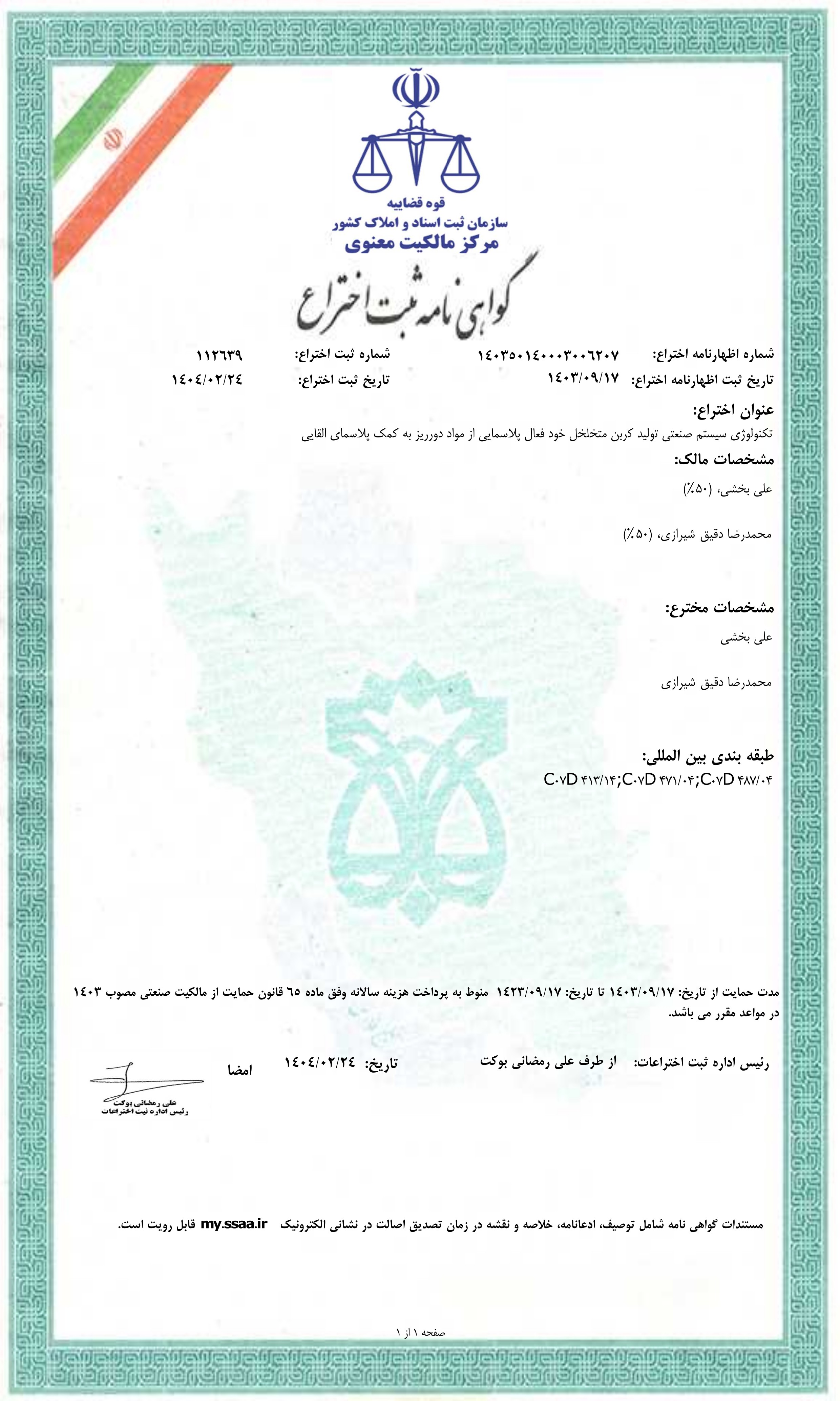The technology of the industrial system for the production of plasma-based self-activated porous carbon from waste materials by utilization of induction plasma
Issued 2025-05-14
| Team | |
|---|---|
| Author(drafter): | Inv. Ali Bakhshi |
| Filed by (applicant): | Inv. Ali Bakhshi |
| Inventor(s): | Inv. Ali Bakhshi, Mohammad Reza Daghigh Shirazi |
| Assignee(s): | Inv. Ali Bakhshi (50%), Mohammad Reza Daghigh Shirazi (50%) |
| Evaluations | |
|---|---|
| Application No.: | 140350140003006207 |
| Arbitration of Patent: | Iran Nanotechnology Innovation Council |
abstract:
The production of porous nanomaterials, such as porous carbon, often requires harmful chemicals, energy, and time. Problems with the pyrolysis furnace include several stages of activated carbon preparation, continuous release of pollutant gases, high input gas, and high temperature. The self-activation method is a new solution for porous carbon production, where inert gases circulate as input along with the volatile or gas sector. Due to the high volume of pollutant gases, a condensation unit can condense these gases at -120 °C to separate heavy gases and initiate synthesis within the condenser. The system is made in the shape of a self-activating torus that does not have a continuous gas effluent problem, and all of the produced gases are consumed or condensed. The adjustable pulse source, the torus shape, the inlet angle, and thermo-acoustic phenomena in both the condenser and the hot source (plasma) cause gas convection along the torus axis. Sound waves can cause planetary-like dynamics, axial breathing, and staticizing the particles in the gas phase by playing the roles of rotation, axial, and destructive pressure gradients. The system can obtain active porous carbon and nanocomposites in a minimum time of a few minutes to several hours, depending on the raw materials in the reaction boat, along with surface processing. Therefore, the porous carbon can be collected from the boat and the condenser. The synthesis of porous nanostructures from raw materials is achievable over 1500°C without concern. The condensation of carbon dioxide gas in the condenser is achieved by a cooling unit, which forms the various porous structures of self-activated carbon. Self-activated porous carbon, with its porous structure, can absorb fluids (e.g., drugs) and chemical pollutants, and inhibit noise pollution. Therefore, by increasing the porosity volume and specific surface area, high-tech applications can be explored for various industries, such as batteries, supercapacitors, photocatalysts, and adsorption. In a case study, a nanocomposite of graphene oxide, porous carbon, hexagonal boron nitride, magnetite nanoparticles, and titania nanoparticles was fabricated by a system at 1050°C at 3336 mg/g, with a photocurrent density of 70 µA/cm².
Download patent from "Real Estate Registration Organization of Iran-Office of Industrial Property": 112639
Start-Up webpages: Google Website
Patent certification in persian: 
